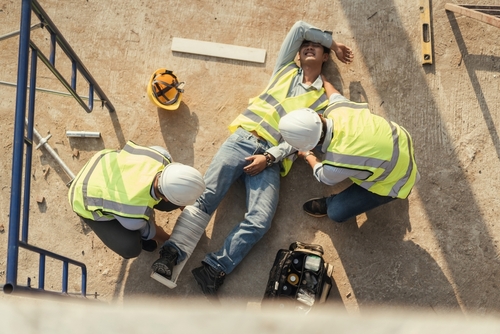How to Prove Who is At Fault for a Car Accident
- Car Accidents
The legal theory of Predetermined Fault or Predetermined Negligence is relevant to any property damage or personal injury claim that results from a car accident. This theory centers on the obvious nature of the negligence of the at-fault driver, so there is no sense wasting time arguing about it.
You don’t even have to have your Miami auto accident lawyer file a lawsuit in these situations because the insurance company of the driver is not going to argue the liability of the case. However, they will be motivated to argue with the amount that you wish to recover in compensation.
Determine Who’s At Fault By Reviewing Circumstances
Sometimes, it is necessary to review the circumstances of the accident to ascertain whether predetermined fault is truly inarguable. For example:
Cutting Across Traffic Lanes
When someone cuts across several lanes of traffic on a busy highway, predetermined fault is probable. It is generally a situation where a driver is about to miss his exit and impulsively cuts across traffic without turn signals.
Driving Intoxicated
Whenever a driver causes an accident while intoxicated, it is difficult to claim that he or she is not the obvious at-fault driver. The DUI will be enough to establish fault unless the victim’s negligence in some way trumps the negligence of the intoxicated driver.
Driving With A Suspended / Revoked License
While driving with a suspended or revoked license is not automatic proof of who is at fault, it can certainly help your case if the at-fault driver has lost their license due to reckless driving, speeding, or DUIs. This won’t ensure that your claim will be successful, but the past violations will support your claim.
Rear-End Collisions
It is almost impossible for a driver to exactly judge the distance of your car behind the one in front of you, so a particular standard is used in most states to determine whether a rear-end collision is an example of predetermined fault: Drivers should not follow other drivers more closely than is reasonably safe with regard to speed, traffic, and road conditions.
A reasonable and prudent distance between two cars can be measured in two ways:
To measure this reasonably safe distance, the guideline is to keep a distance of one car for every ten miles per hour of speed or to remain far enough behind another vehicle to allow yourself two seconds of reaction time if the vehicle should suddenly stop.
Typically, rear-end collisions occur because the at-fault driver did not maintain a reasonably safe distance. The driver cannot really prove that he did or did not attempt to maintain a reasonably safe distance, though the fact that the rear-end collision occurred is typically viewed as an indication that you did not. There are exceptions to the rules and it is not wise to make the assumption that 100% of the fault will be placed on the rear driver.
Left-Turn Collision
Whenever a driver makes a left turn where he must cross a lane of oncoming traffic, it is his responsibility to yield to the oncoming traffic. If the driver crosses a lane of oncoming traffic, he is unlikely to have a valid excuse for doing so. Thus, it is the responsibility of the left-turning driving to ensure that the oncoming lane is completely clear.
Liability Not Guaranteed By Predetermined Fault
It’s very difficult for an at-fault driver to overcome liability in a case with a predetermined fault. But, the possibility remains that the victim’s own contribution to the accident may be enough to lessen the at-fault driver’s responsibility.
Generally, if there is a predetermined fault, the at-fault driver will find it very difficult to overcome liability. However, if the victim is partially at fault for the accident as well, then the at-fault driver may not hold all legal responsibility. The predetermined fault will still exist, but the at-fault driver will be held accountable for less than 100% of the fault in the collision. The percentage of liability will be negotiated between the insurance companies and the victim or will be established in a court judgment.
Faulty Brake Lights Example
Imagine that Mike is driving in front of Jen, both going the same direction, and Jen is not tailgating but has not allowed for enough distance. Then when Mike slams on his brakes, Jen is not forewarned because Mike’s brake lights are out. Jen crashes into Mike’s car in a typical rear-end collision. Who Is legally liable for this accident?
Because Jen rear-ended Mike, she is automatically going to bear the majority of the fault for the collision. However, the faulty brake lights on Mike’s car make him partially responsible too. The exact percentage of legal liability for the accident can be worked out in negotiation.
Jen’s insurance company is not going to agree to 100% liability if Mike’s brake lights failed. Rather, they will want to split the percentage of fault in a way that minimizes Jen’s financial liability for the accident.
Turning Through Intersection Example
Bill is in the left lane of a two-lane highway, preparing to make a left turn across the oncoming lanes of traffic. There are no traffic lights at the intersection. Bill looks both ways and feels confident all cars have cleared the intersection. He begins his turn across the highway.
Imagine that Lisa is about to make a left turn across oncoming lanes of traffic where there is no traffic light. She looks around to verify that all cars are clear of the intersection and starts to make her turn. Seemingly out of nowhere, another car appears, and the crash is unavoidable. Because it is a left-turn accident, Lisa is 100% at fault for the accident. However, in this specific situation, there is another factor. The other driver was speeding, contributing to the likelihood of an accident, and lessening Lisa’s percentage of liability for the accident.
Evidence of Predetermined Fault
Fault must always be proven with evidence in an auto accident claim or lawsuit. The victims must be able to identify the vehicle that caused the accident and prove the circumstances.
The insurance claims process will involve proving fault with a police report, witnesses, and any other evidence that can be obtained to prove to the insurance company that a predetermined fault exists.
Police Report
The police report includes a section on Contributing Factors where the investigating officer explains what led to the accident, according to his or her assessment. This is why the police report is such an important piece of evidence in establishing fault.
If the investigating officer issues a citation for following too close, speeding, or failure to yield, then the person who received the citation will find it difficult to get out of legal liability for the accident.
The opinion of a police officer can make all the difference in an insurance claim because the officer is trained to evaluate the situation without bias with legal education in identifying the cause of accidents and reconstructing accidents.
When deciding a case, the testimony of the officer will be accepted by the jury, and an insurance claims adjuster would rather settle the claim than enter into a lawsuit like this. The jury may even decide on a verdict that is much higher than what the victim is asking for, so it is in the best interests of the insurance company to settle the case for a fair amount.






